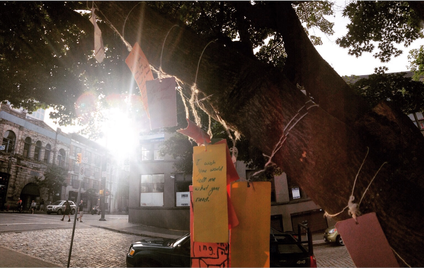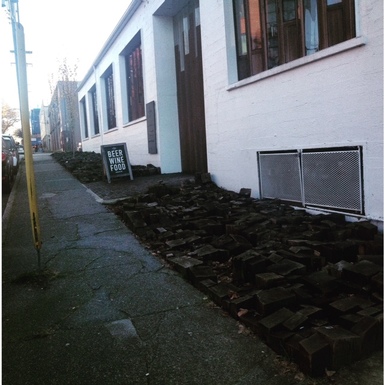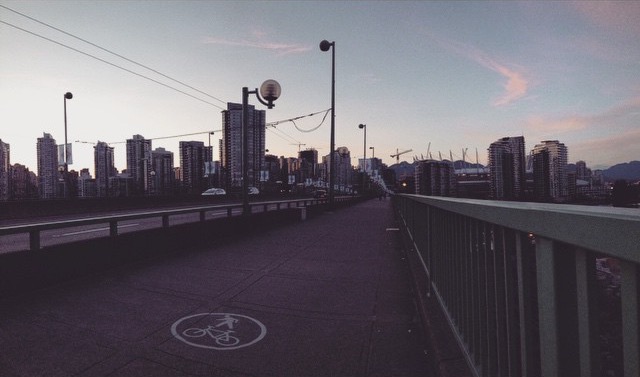|
Vancouver recently ranked fifth in a global “Quality of Living” survey, an annual questionnaire that considers factors such as air quality, crime rates, political stability, and personal freedom before determining the degree to which a city is “livable.” However, often with “livability” comes (further) inequalities, as a complex combination of social, political, racial, and economic tensions contribute to soaring real estate prices and an egregious lack of social housing. In Vancouver, demand for housing far exceeds supply. Further, concepts like “political stability” and “personal freedom” are, in Vancouver, completely individualized; we celebrate superficial "ethnic" holidays that only seem multicultural. Here I am thinking of Yoga Day, which British Columbia’s premiere, Christie Clark, marked by shutting down the Burrard Bridge. But when it comes to demonstrating acts of true solidarity with resistance struggles our political leaders have their heads in the sand.  Victory Square: A sign read, “What does your heart wish” and members of the community responded (each of us knows what we need). Photo credit: Nicole Luongo Victory Square: A sign read, “What does your heart wish” and members of the community responded (each of us knows what we need). Photo credit: Nicole Luongo
Just as social stratification has deepened in Vancouver, the city’s low-income population has grown in size and become more vocal about their socially and structurally produced living conditions. Nowhere is this more apparent than on Vancouver’s Downtown Eastside (DTES), an impoverished yet lively neighborhood that has been significantly affected by the City Council’s ambitious urban revitalization program.
Largely because social programs and policies have both failed to address the deepening social stratification and have failed to generate compassion for those on the lower end of the socioeconomic spectrum, the DTES is a place where folks who have lived through hardship and trauma often end up. As a neighborhood that holds people who have been excluded and marginalized, it's possible to see sadness when walking the streets of the DTES, but I think it's also important not to lose sight of the fact that the DTES is comprised of people who are invested in their community and who are involved in the lives of their neighbors, many of whom have shared similar life experiences. If you're willing to look, there is a lot of beauty there too. But it appears that change in the form of "urban revitalization' is on the horizon. Urban revitalization is synonymous with gentrification, a practice through which residential and commercial developers alter the social and economic culture of a neighborhood by replacing older housing and services with new ones.  An old winery on the DTES that has been converted into a restaurant: what else could this space have been used for? Photo credit: Nicole Luongo An old winery on the DTES that has been converted into a restaurant: what else could this space have been used for? Photo credit: Nicole Luongo
Gentrification is a product and mechanism of globalization; it is symptomatic of middle- and upper-class entitlement to low-income spaces. Gentrification is also a part of the broader Canadian fable of arriving and settling on terra nullus (empty land). White Canadians have been the primary beneficiaries of gentrification, so it is perhaps unsurprising that white people have often been quick to frame discussions of indigenous struggles and rights and discussions about hating white people. In that same vein, those who have the economic resources to begin the process of gentrification are often most likely to see themselves as saviors. In their eyes, they are simply making poor inner-city neighborhoods like the Downtown Eastside “livable,” though they rarely question what "livable" means.
The point I'm building toward is that a consequence of gentrification--a consequence of making low-income neighborhoods "livable"--is displacement, a term that denotes the forced expulsion of one social group to make room for a more economically and socially advantaged social group. Gentrification may also be considered a form of structural violence. In sociological terms, structural violence is the process through which inequalities in access to power and resources are institutionally legitimated so that disadvantaged social groups are not able to meet their needs. In Vancouver, structural violence looks like building infrastructure on unceded indigenous land but mostly building capitalist institutions that reproduce hegemonic relations of power (that is, colonial relations of [post] colonial power).
Structural violence contributes to a number of negative health and social outcomes. For example, vital harm reduction services for people who use illicit drugs are concentrated near policing stations on the Downtown Eastside. Even though these services are legal, police are still able to confiscate illicit drugs and unused drug-using paraphernalia. The result is that many people who use illicit drugs forgo accessing these services, which puts them at an elevated risk of overdosing and/or contracting diseases such as HIV and HCV.
The criminalization of drug use often has the effect of incarcerating and ultimately dislocating people; criminalization doesn't address underlying hardships or issues related to the user's health. Yet the criminalization of illicit substances continues because as long as drug users are a visible feature of a community, the community will be deemed undesirable to investors, developers, and future community members. The point here is that while market-driven gentrification dislocates people, governmental policies also work to dislocate people in an effort to pave the way for gentrification. Thus, gentrification contributes not only to oppression and negative health outcomes, but may also incite resistance and lead to social change. We must question whether Vancouver is truly “livable,” and for whom, while critically analyzing the ways in which violent social processes, such as gentrification, contribute to rising inequalities in both local and global contexts.
Nicole Luongo
Nicole Luongo is a first year MA candidate at the University of British Columbia (UBC). Her interests include medical sociology and feminist methodologies. Her thesis examines the structural production and reinforcement of disordered eating among street-involved youth. Comments are closed.
|
.
.
Tags
All
|


 RSS Feed
RSS Feed